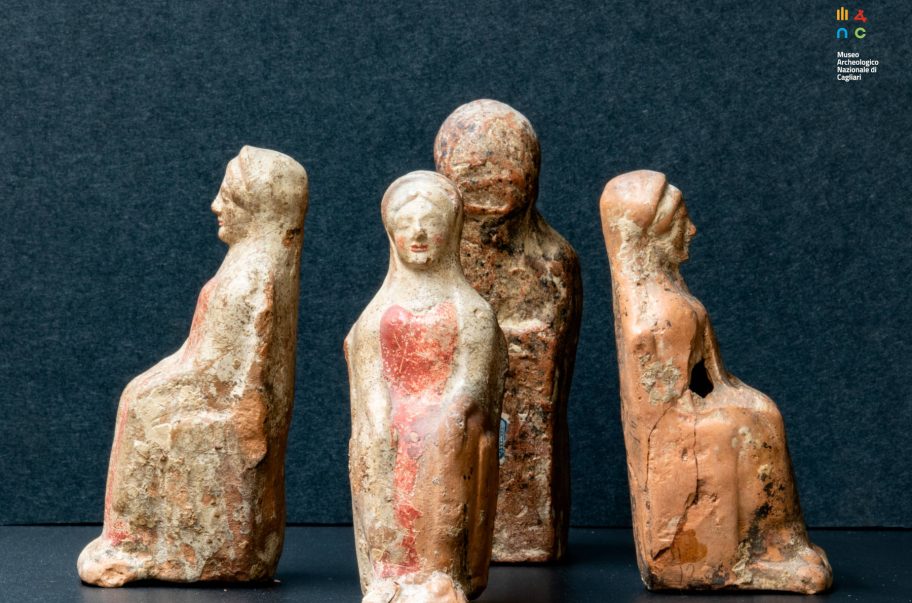Corpo Pagina
During the easter period there are 4 figurines depicting female figures seated on thrones from Necropolis of Tuvixeddu, Cagliari, exposed in the Archaeological Museum.
During the excavations conducted in 1908 in the Necropolis of Predio Ibba, in the area of Tuvixeddu, Antonio Taramelli reported the discovery, among the many burial artifacts, of four identical terracotta figurines. Three of these were found together in tomb 91, while one was placed in tomb 142. In the tomb 91 there were several other artifacts, including two amphorae with Punic inscriptions, that can be seen on the first floor of the Museum, in the showcase dedicated to the Necropolis of Tuvixeddu.
The Necropolis of Tuvixeddu is the largest surviving Punic necropolis in Sardinia. People began to use this funeral area in the late 6th century BC and they continued to use it until the Roman period. Originally it covered about 80 hectares, from Santa Gilla to Via Is Maglias and from Viale Sant’Avendrace to Viale Merello.
There are mainly Punic chamber rock-cut tombs, with well access. Through a deep vertical corridor, one could get into a chamber, sometimes with painted walls, where the deceased would be placed along with precious burial objects such as jewelry, coins, ceramic vases, and figurines.
The figurines displayed here depict a seated female figure on a throne wearing a long dress with sleeves reaching the elbows. The head is covered with a long veil and the hair is gathered in a hairstyle divided into two bands on the forehead. The hands lay on the knees and the arms are on the armrests of the throne, while the feet rest on a footstool.
The representation of facial features is quite detailed and on the face it is recognizable the so-called “archaic smile,” typical of Greek sculpture from the 6th century BC.
In some figurines traces of painting are still evident: the details of the body and veil are depicted in white, while the dress, cheeks, and lips are painted in red.
This type of representation originates from Greek and Sicilian models.

